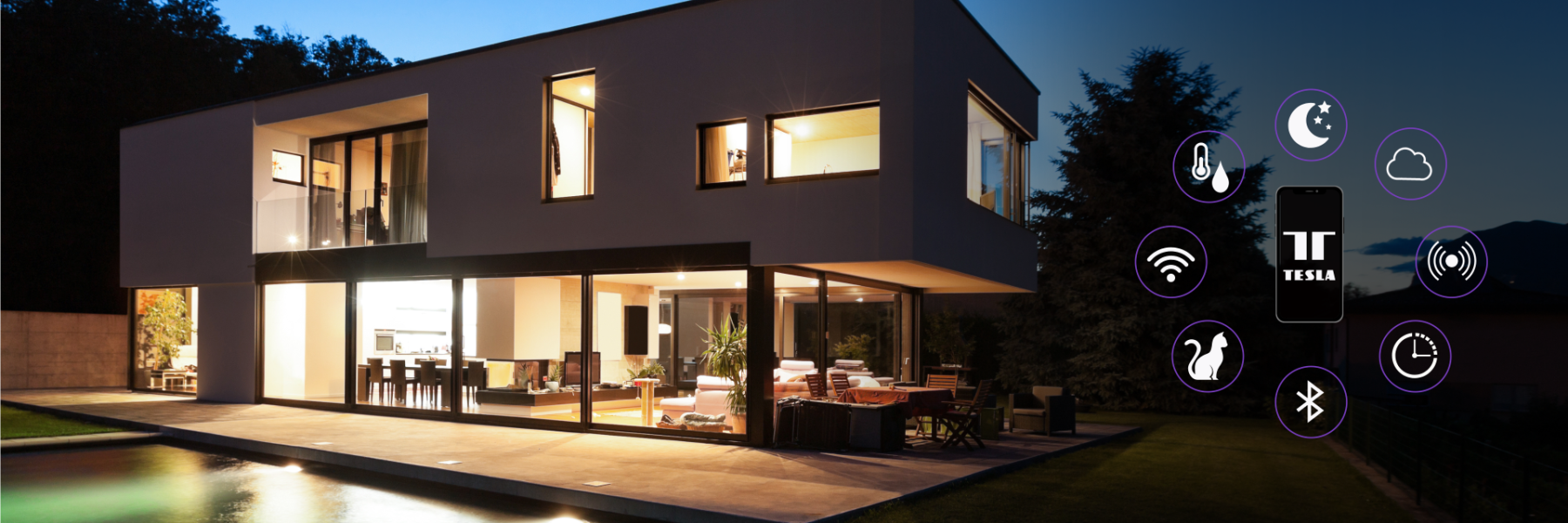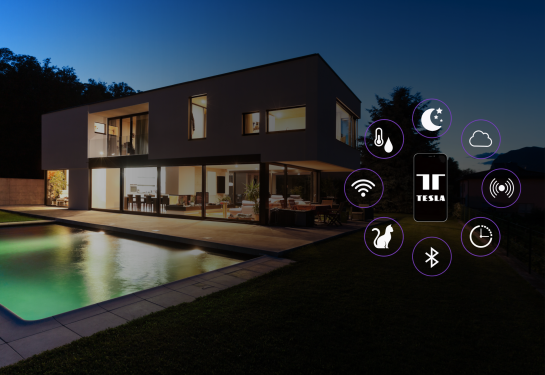2023 was a great year for smart homes - with dozens of innovative products and developments that are changing the way we live. And 2024 will be the year of integration of new technologies and developments into the home. Czech smart home brand Tesla presents the smart home trends that will shape the year ahead.
Let's dive into the 6 key smart home trends that will shape our homes in 2024:
Multifunctionality in focus
Multifunctional technology is demanding space: hybrid products that integrate utilities and smart appliances will have a significant impact on the market in the coming years. Think, for example, of a table that is a clever combination of an LED lamp, a wireless charger, and an air purifier. Soon, our smart robotic lawnmower will not only mow our lawns but will also have a camera that patrols the lawn for safety.
Automation on the cube
Next year, automation will reach new heights. More and more fully automated devices will enter the market, doing their job without external human support. For example, a smart vacuum cleaner and mopping device that connects to the water supply, cleans itself, and can also supply water to itself. This level of autonomous operation will demonstrate real-world applications of home automation.
AI Habit Learning
Artificial intelligence is in the air and will soon be an integral part of our smart homes. The next generation of products will use AI to adapt to our habits and optimize their operation based on our lifestyle and daily routine. Voice assistants will evolve through machine learning, expanding their capabilities. And they will quickly become part of our lives, providing assistance in areas such as ChatGPT.
See everything
The global market size for smart home security cameras was $7.37 billion in 2022, with the segment forecast to grow at a compound annual growth rate of 19% between 2023 and 2030. The popularity of smart home security cameras is significantly linked to their ability to effectively prevent burglaries. Their integration into the smart home ecosystem, their increasingly sophisticated image and video features, and their complex remote control capabilities will further increase their popularity.
Smart ecosystem theory
Developments in the smart home are increasingly focusing on using technological innovations not only for convenience but also to actively contribute to a more sustainable lifestyle. Smart irrigation and drip systems, for example, precisely regulate the water demand of plants, taking into account soil conditions, capacity allocation, local weather conditions, or specific plant needs. Such devices can help users save significant amounts of water.
Smart BabyTech
The rise of "Smart Baby Tech" has revolutionized both childcare and child-rearing, offering innovative approaches to integrating technology and human care. Smart baby monitors, wearable health trackers, and interactive learning devices are just a few examples of the high-tech devices that are becoming increasingly popular among parents who want to provide a safer digital and physical environment for their children.
Smart hosts
The global market for smart pet technology was $5.12 billion in 2021 and is expected to grow to $22 billion by 2028. New solutions emerging in this segment will have a crucial impact on how we care for our pets in the future. From automatic pet feeders and water dispensers to Smart baby monitors and smart GPS collars, there are a range of tech gadgets already waiting for owners and their pets.




